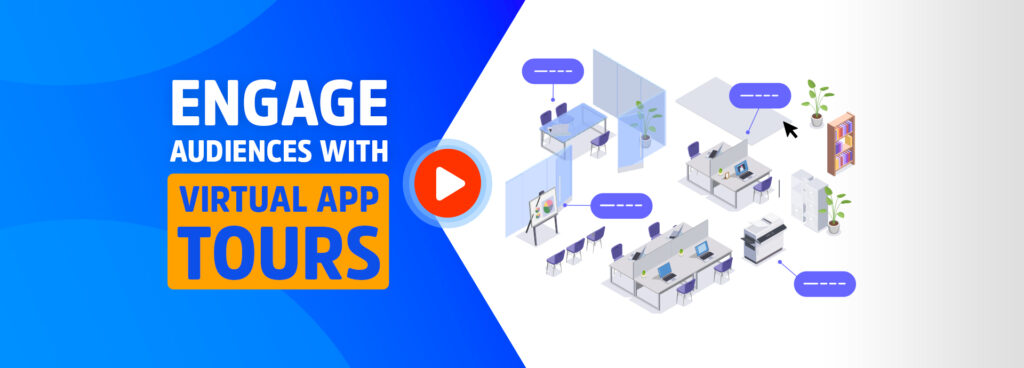
App demo videos have evolved from simple overviews to engaging virtual tours. These videos now offer interactive elements that allow users to explore and interact with app features directly. This interactivity makes the learning process more immersive and engaging.
Why Interactive App Demo Videos?
Traditional demo videos can be passive. They show features and functions but often fail to capture a user’s full attention. Interactive app demo videos help by letting users navigate the app themselves. This hands-on approach mimics real world usage, making it easier for users to understand and retain information about your app.
Key Interactive Elements
- Hotspots: Hotspots are clickable areas within the video. They direct users to specific features or sections of the app. Imagine a hotspot over a “Settings” icon in an app walkthrough video. When clicked, it shows a detailed view or explanation of the settings feature.
- Clickable Areas: Clickable areas take hotspots a step further. They allow users to interact with elements like buttons, menus or forms within the video. For instance, in a mobile app demo video for a shopping app, clicking on a product image can show more details, just like in the actual app.
- Branching Scenarios: Branching scenarios let users choose different paths based on their interests. This is especially useful in app explainer videos for complex apps with multiple functionalities. Users can select what they want to explore, such as choosing to watch a demo of either the app’s photo-editing features or the apps sharing options.
- Interactive Overlays: These overlays provide additional information without disrupting the video flow. They can include text boxes, images or even mini-videos. In an iOS app demo video for a fitness app, an overlay might pop up to explain a specific workout’s benefits when a user clicks on it.
Benefits Of Interactive App Demo Videos
- Enhanced Engagement: Users interact directly with the content, which keeps them engaged longer.
- Better Understanding: By exploring at their own pace, users can focus on the features most relevant to them.
- Increased Retention: Interactive elements make the learning process active, helping users remember information better.
- Personalized Experience: Users can tailor the demo to their needs, making the experience more relevant and enjoyable.
Real-World Examples
- Canva’s Interactive Tutorial: Canva’s app demo video includes clickable areas that let users try out features like adding text or images directly within the demo. This hands-on approach helps users understand the app’s design capabilities effectively.
- Duolingo’s Interactive Walkthrough: Duolingo uses hotspots in their app walkthrough videos to guide users through the language learning process. Each hotspot reveals detailed explanations of lessons and practice methods.
- Salesforce’s Interactive App Explainer: Salesforce offers a branching scenario in their app explainer videos. Users can choose which aspect of the CRM they want to explore, such as lead tracking or reporting tools.
Creating Your Own Interactive Demo Video
- Identify Key Features: Focus on the most important features of your app that users should learn about.
- Plan Interactive Elements: Decide on hotspots, clickable areas or branching scenarios that will make your video engaging.
- Test and Refine: Ensure the interactive elements work smoothly and add value to the user experience.
Ready to transform your app demo into an engaging, interactive experience? Ripple Animation can help you create stunning interactive app demo videos that captivate and convert. Our expert team will work with you to integrate hotspots, clickable areas and more, making your app’s virtual tour both informative and engaging. Contact Ripple Animation today to get started on your interactive app demo video. Let’s make your app’s features shine!
